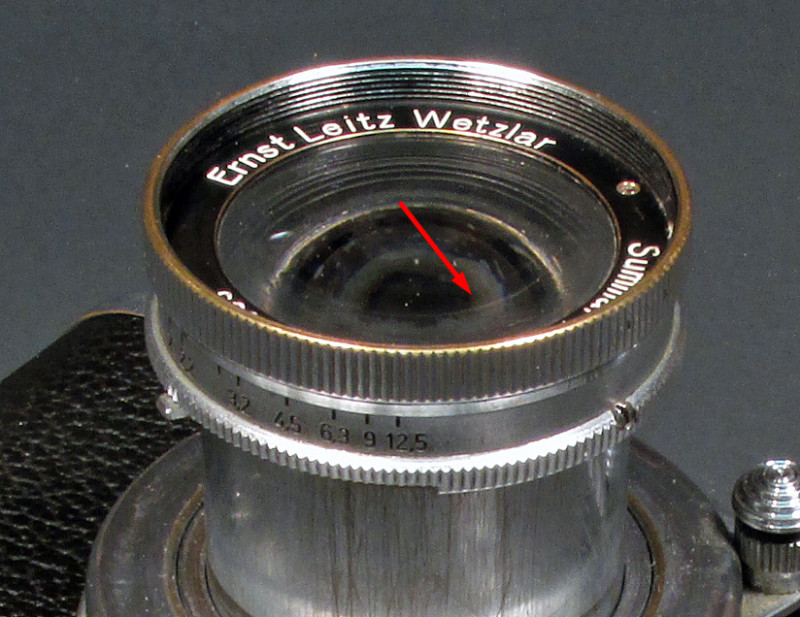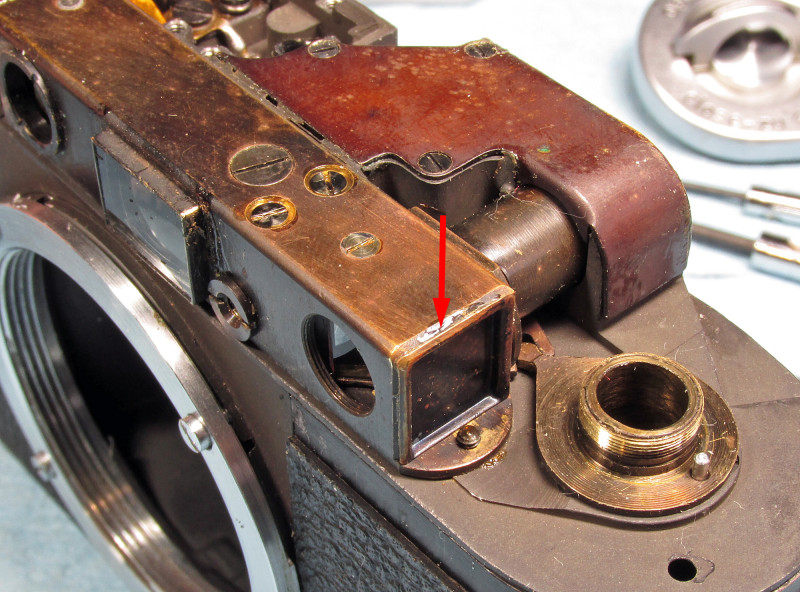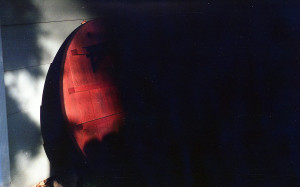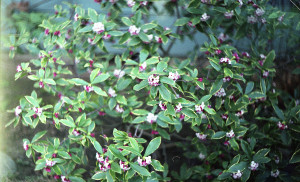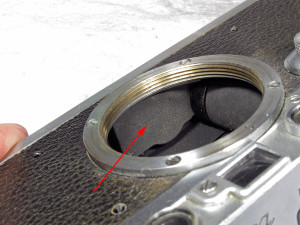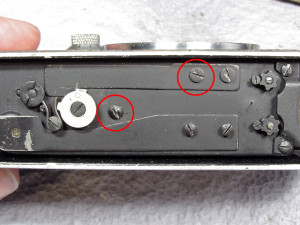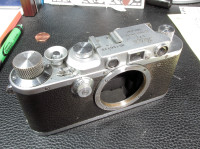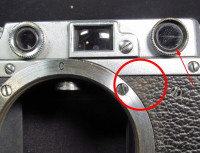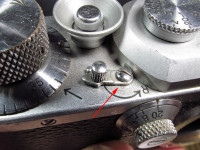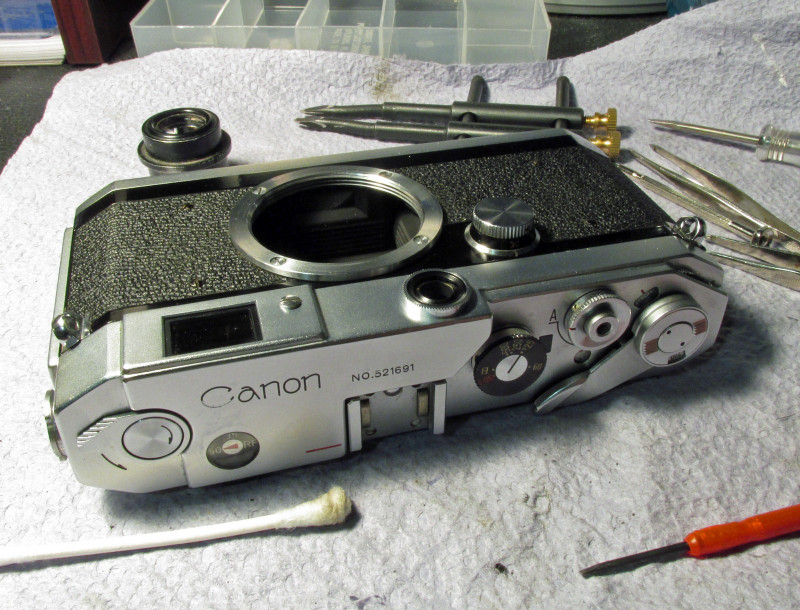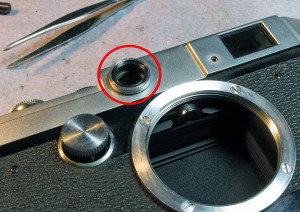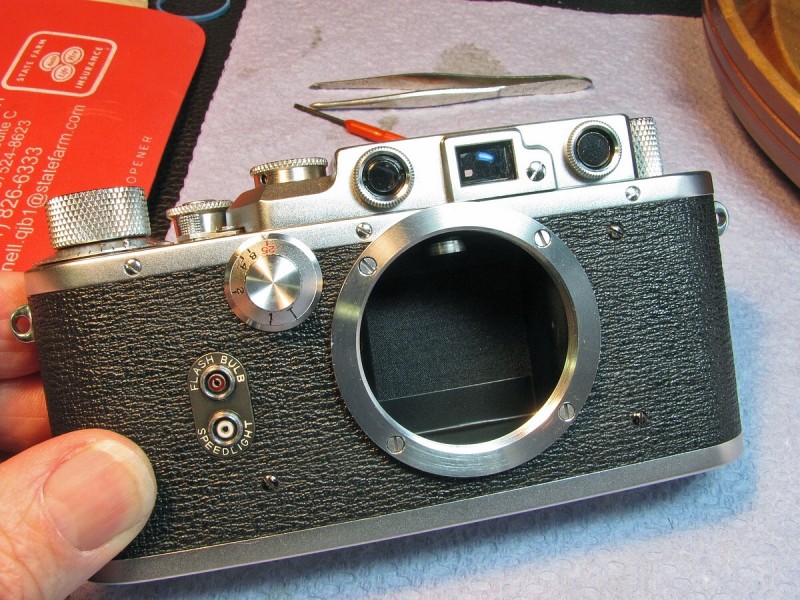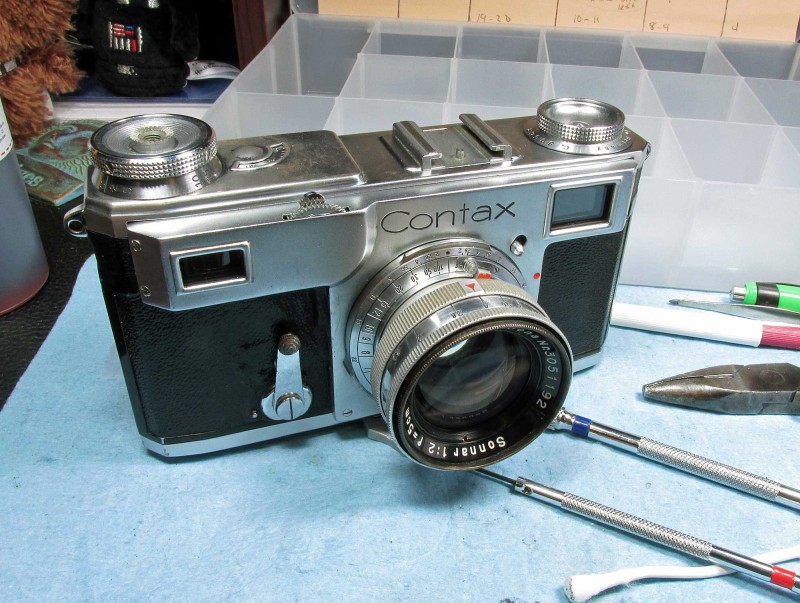
Giving my 1937 Zeiss Ikon Contax II as best of a CLA (clean, lube, adjust) as I could without dismantling the mechanism itself, I doused with lighter fluid twice, avoiding the shutter slats, tapes and glue, which is fairly easy as, everything is on one side. then I oiled a few choice spots, avoiding escapements.
With the help from forum friends, I fixed a problem with the Infinity on the RF, the previous hacker put the longer screws on the RF side of the front plate and they were preventing the plano-convex lens from traveling all the way to the side.
Continue reading 1937 Zeiss Ikon ~ Contax II CLA
